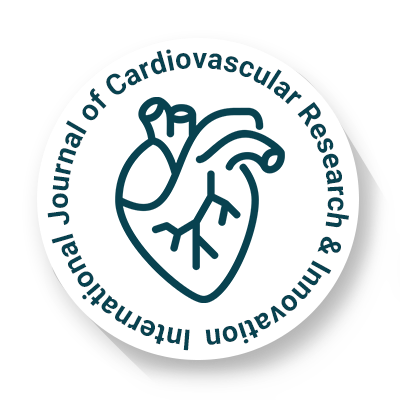
International Journal of Cardiovascular Research & Innovation
OPEN ACCESS

OPEN ACCESS

1Prakash Heart Station, Uttar Pradesh, India
2Tech Mahindra, New Delhi, India
3Department of Cardiology, Star Hospital, Telangana, India
Background: The elastic properties of the aorta are modi¬fied in numerous cardiovascular (CV) and non-cardiovascular (non-CV) diseases. Multiple studies have evaluated aortic stiffness in myriads of disease state, albeit only a few Indian studies have estimated the normal values of aortic stiffness in the healthy population. To the best of our knowledge, till date, no research has been undertaken to determine the age and gender-speci¬c value ranges of aortic stiffness parameters in healthy subjects. Hence, in the present study, we endeavored to estimate these values in our distinctive study groups of healthy adults.
Methods: This was a prospective observational study in which 58 healthy adults were enrolled during the turbulent Corona pandemic. The study group consisted of individuals of either sex within the age range of 18 to 60 years and was divided into six groups arbitrarily. Exhaustive M-mode and Tissue Doppler Imaging (TDI) was performed by a 4-dimensional XStrain echocardiography (4D XStrain E) system for extensive evaluation of multiple M-mode and TDI-derived parameters of aortic stiffness and superior wall velocities of ascending aorta.
Result: Aortic Systolic diameter (AOS), Aortic Diastolic diameter (AOD), aortic strain, and elasticity modulus were greater in males. On the contrary aortic superior wall velocities (SAO: Aortic superior wall velocity, EAO: Early diastolic velocity, and AAO: Late diastole velocity) were higher in females. Increasing age leads to a decline in the majority of stiffness parameters derived by M-mode echocardiography. Correspondingly, EAO showed a deterioration with advancing age.
Conclusion: The authors report a normal range of M-mode and TDI-derived values of aortic stiffness of ascending aorta in healthy Indian adults. The difference in magnitude of aortic elasticity indices has been demonstrated in men and women, as well as in different subsets of the study group.
Received 1 September 2023; Revised 2 October 2023; Accepted 9 October 2023
1Prakash Heart Station, Uttar Pradesh, India
2Tech Mahindra, New Delhi, India
3Department of Cardiology, Star Hospital, Telangana, India